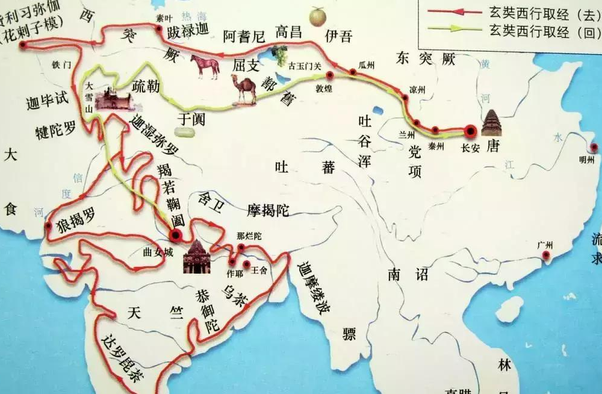Ancient India has many records in ancient Chinese documents
There are also many names
“Yindu” is the one that is used more often, so it has been passed down to this day and has become the official name.
Let me give a brief introduction to the names of India in ancient China:
1. Shendu, Xintou, Xindu, Xiandou
These names mainly appear in documents before the Tang Empire, the most common of which is “shendu”)
They are basically transliterations of ancient Sanskrit, and due to the clutter of ancient spoken languages, many versions appeared when they were recorded into Chinese. But their pronunciation is similar.
Actually it is Sanskrit Sindhu
The earliest name Shendu appears in “Historical Records of Dayuan”, 100 BC.
At this time India was recorded as a piece of the Western world, but not a country.
The meaning of Shendu in Chinese characters. Its approximate meaning is: the body is poisonous.
2. Guishuang
In documents from the Eastern Han Dynasty, India is sometimes recorded as Guishuang, which is actually the Chinese name of the Kushan Empire. At that time, most of northern India was controlled by the Kushan Empire. Chinese traders used this name to record the land
Kushan, if in Chinese characters, its approximate meaning is: expensive frost
3. Tianzhu
The Tang Empire’s official name for India. In the famous ancient Chinese novel “Journey to the West”, the content of the story is that Tang Monk and the Monkey King went through tests and finally went to Tianzhu to obtain Buddhist scriptures.
The name first appeared in “Book of the Later Han: Biography of the Western Regions” in 500 AD
Tianzhu is actually still the transliteration of Sindhu, but because there are too many pronunciations, the similarity is very low.
Tianzhu, in Chinese characters, its approximate meaning is: musical instrument of the sky
4.Yindu
In the late Tang Empire, the famous monk and explorer Xuanzang traveled to India twice. And wrote the famous “Records of the Western Regions of the Tang Dynasty”
This is a very important document,The history of the ancient Maurya Dynasty in India was basically discovered based on the records in this book.

- The line of Xuanzang traveled to India
In this book, he believes that the name “Tianzhu” has been deformed, and the previous names were relatively confusing. Therefore, after communicating with local people, he believed that the more accurate pronunciation should be “Yindu”. This name has been used ever since and has not changed again.
India, which is difficult to translate in Chinese characters, may be understood as: printed ruler, or my Chinese is not good enough, you can correct me.
There are also some strange terms in China, all of which are related to ancient India. In fact, they do not come from India.
For example: Guinea pig, also called Tianzhu mouse in China
For example: geranium, called Tianzhu sunflower in China